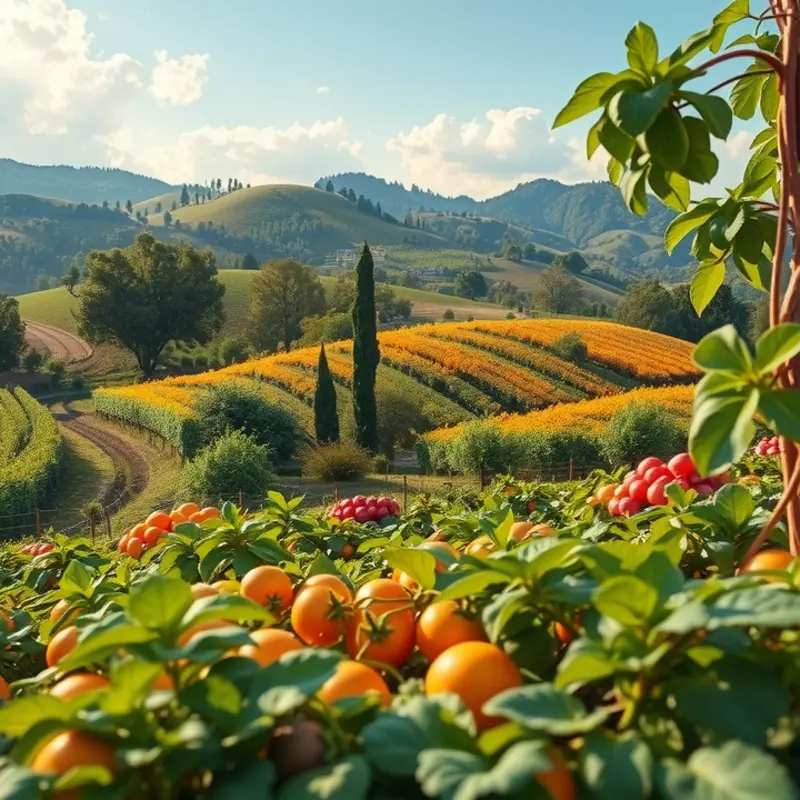Ancient grains have been the cornerstone of many culinary traditions, celebrated for their nutritional value and unique flavors. These grains—farro, quinoa, millet, and others—are not merely ingredients but are integral to the stories and customs of diverse cultures worldwide. As food enthusiasts, understanding these traditions offers a fascinating glimpse into global cuisines and the harmonious relationship between humans and the earth.
The Heritage of Farro: Italy’s Ancient Grain

Farro, a wheat grain largely synonymous with Italy’s rich culinary heritage, traces its history back to Roman antiquity. This ancient grain, known scientifically as Emmer wheat, has been revered for its nutty flavor and chewy texture—an ideal foundation for rustic Italian dishes. Embraced by both wealthy and common folks throughout history, farro has been a dietary staple, often stored as an essential food reserve, underscoring its cultural importance.
Traditional farro preparation involves meticulous steps to unlock its full flavor potential. Typically soaked overnight, the grains are then simmered gently in ample salted water to achieve the desired tenderness. This cooking technique, shared among many Italian regions, is not only a testament to its utility but also a reflection of how Italian culture values time-honored methods.
Farro’s versatility shines through an array of recipes, from hearty soups to vibrant salads. In minestre di farro, a traditional Tuscan soup, it pairs with vegetable broth and seasonal vegetables, becoming creamy yet maintaining its integrity. Alternatively, farro serves as a sublime base for salads when tossed with fresh tomatoes, herbs, and a drizzle of olive oil—a dish that seamlessly combines simplicity with robust flavors.
Culturally, farro holds more than just culinary significance; it symbolizes a connection to the land and the perseverance of local traditions, echoing Italy’s historical reliance on grains. Farro cultivation is largely sustainable, often grown in rotation with legumes to enrich soil fertility. This practice highlights the grain’s role in eco-friendly agriculture, reinforcing its value in sustainable food systems and cultural preservation.
For those intrigued by global culinary practices, incorporating farro may align with efforts towards mindful eating and savoring ancient foodways. Learning about the interplay between traditions and ingredients can deepen appreciation for global cuisine, as discussed in this exploration of culinary influences. It illuminates how ancient ingredients like farro have shaped cultures and diets across the globe.
In contemporary kitchens, farro’s resurgence underscores a growing movement towards wholesome, unprocessed foods. It complements dishes as a canvas for bold flavors, inviting chefs to experiment with traditional and modern recipes alike. Whether enjoyed in a rustic Italian dish or as a novel creation, farro represents a bridge connecting the past to present-day culinary exploration.
Quinoa: The Andean Staple of Life and Tradition

Deep in the Andes, tucked within the cradle of Incan civilization, quinoa was cultivated and revered as more than a mere grain. It was known as “chisaya mama,” or “the mother of all grains,” a testament to its revered position. The Incas valued quinoa alongside corn and potatoes, both staples that helped nourish their expansive empire.
Quinoa thrived in the harsh conditions of the Andean highlands, a testament to its resilience and versatility. It was an essential component of the Incan diet, providing a rich source of protein, fiber, and essential amino acids. Ancient efforts to cultivate quinoa were both an art and a necessity, entwining agriculture with cultural practices. Farmers passed down knowledge, from sowing to harvesting, using terraces cut into mountain slopes. They created intricate irrigation systems to maximize the challenging environments’ potential.
Culinary Significance and Traditional Preparation
Traditional Andean cuisines embraced quinoa as a nutritious option capable of being transformed into diverse meals. The preparation methods, passed through generations, varied from simple stews to more elaborate recipes. One of the traditional dishes heavily featuring quinoa is “pesque,” a creamy porridge-like meal enhanced by the addition of cheese and milk. This dish is reflective of the Andean flair for hearty fare, utilizing every ingredient to its fullest.
Quinoa seeds were often toasted and ground into flour to create “kañiwa,” used for bread and fritter-like items that would sustain and energize for long periods of labor. During harvesting, communities came together in celebration, recognizing the grain’s importance in both sustenance and tradition. Quinoa was also ceremoniously prepared for spiritual rituals, emphasizing its sacred nature.
Modern Adaptations and Festive Uses
In contemporary times, quinoa’s global popularity has transformed how it’s appreciated outside the Andes; however, its roots remain firmly planted in traditional uses. Today, quinoa continues to play a significant role in the Andes, particularly during festive occasions when it is used to prepare “chuño” alongside dried meat or fried corn.
Quinoa’s adaptability allows it to replace rice or couscous in various dishes. In the Andean regions, innovative adaptations might see quinoa incorporated into tamales or even desserts like quinoa puddings. Such versatility underscores quinoa’s seamless integration into both everyday meals and special occasions.
For those interested in exploring sustainable and culturally rich culinary practices, discovering quinoa offers an insightful journey through both Its history and its nutritive benefits. Interested in further exploring how ancient grains fit into modern eating habits? Consider checking out the eco-smart kitchen storage guide to efficiently store and use grains like quinoa while minimizing waste.
As you delve deeper into the world of ancient grains, quinoa serves as a bridge between nature’s resilience and human ingenuity, a monument to enduring culinary traditions.
Final words
Ancient grains connect us to our cultural roots and diverse culinary heritages. Whether it’s the nutty flavor of farro in a rustic Italian dish or the delicate texture of quinoa in a vibrant Andean salad, these grains not only nourish our bodies but also our spirits. By reviving these traditional cooking methods, we preserve a tapestry of history and foster a sustainable relationship with our food. With countless recipes to explore, ancient grains invite a journey tempting us to innovate while honoring time-honored practices.








